Hidden Gems of Game Design
Appreciation for games that deserved better than they received

We all have a favorite game that has, sadly, gone unnoticed by the majority. There are different reasons, ranging from the game being ahead of its time to bad marketing. More than anything, these are games that showed us something special, something in the game that most others would have missed.
I’ve turned to my fellow writers here on SUPERJUMP to see what games they hold special and why. The list below is the first round and if you’re interested in seeing more, please let the SUPERJUMP team know!
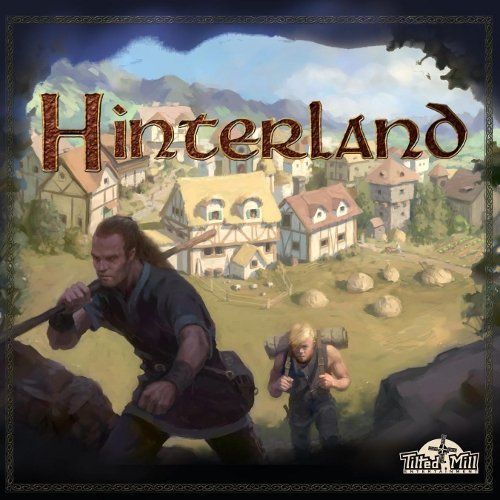
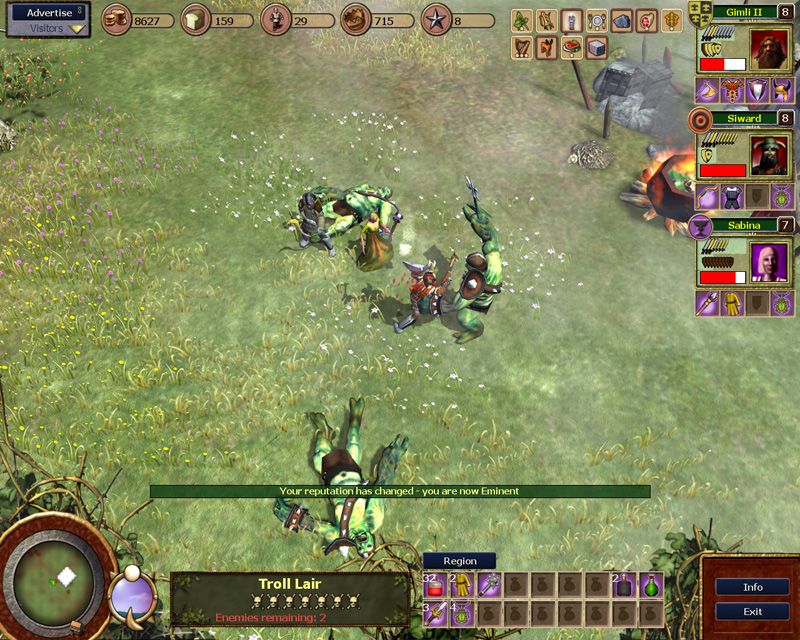
Source: Press Kit.
Josh Bycer
Hinterland (2008)
When it comes to hidden gems, I’m probably one of the most versed in indie games. Heck, there are at least two of them on my Game of the Year list for the past five years. For this collaboration series, I wanted to turn my focus to games that I loved that either never made it big or whose design should be worthy of study and expanded on.
We all have that one game series or concept hill that we will die on to get made, and for me, that game is Hinterland by Tilted Mill. I know every one of you reading this has never heard of this game, and you may not know the developer either. Chris Beatrice, who was the lead designer at Impressions and worked on arguably the golden age of city builders, founded Tilted Mill. Games like Pharaoh and Caesar attempted to simulate city building during these eras while providing their own spin on the design.
Hinterland was an attempt at combining two of my loves, ARPG design and city-building, into something we haven’t really seen at this level before. Previous attempts at this combination are few and we could stretch things to include games like Actraiser and the Dark Cloud series, but they were different compared to Hinterland.

You played the game like an ARPG with yourself as the lord of a new town tasked by the king to build it into a worthy settlement for the kingdom. You controlled construction and hired people to come work for you. Every character could either work at their building or end up conscripted to join your party, venturing out to tame the wilderness. Clearing areas of enemies would unlock their resources to be used by your town or get equipment and items that your villagers could use to improve their utility. As the game went on, you could upgrade buildings in different tracks, which would also change the person working there into a new class. The game ended when you either cleared all points of interest, your town failed to keep up with the demands, or your town ended up destroyed.
What I loved about this game was the connection between the ARPG and city-building aspects. The city-building provided you with resources and people to help you out in the world, while the combat and exploration aided your city-building efforts.
Now comes the depressing part—why is this game featured in a piece about underdog games? To be frank, Hinterland was a commercial flop, but not for the usual reasons. In interviews, Chris said that he wanted to make a low-budget concept game to see if people were interested in it. This was back in 2008, five years before Valve unveiled Early Access, and gave developers a chance to build a game while earning an income from it. Even after they released a mini-DLC for it, Hinterland never grew beyond being just a foundation or prototype for a larger concept. I still believe that if this was developed with early access — especially being one of the first games — it could have taken off as Prison Architect did.
Since then, there have been a few attempts at developers trying to take this design further, but not one I believe has actually been successfully released. There was one that was abandoned, and other games have flubbed things either on the city building or combat side. The idea is that both systems are working in tandem: you need the city building to help furnish and supply the ARPG, and the ARPG to provide you with resources and support the city building.
Hinterland’s concept is one that I have thought up as one of my dream ideas over the years. While this may not be for everybody, this would be one of my perfect games.
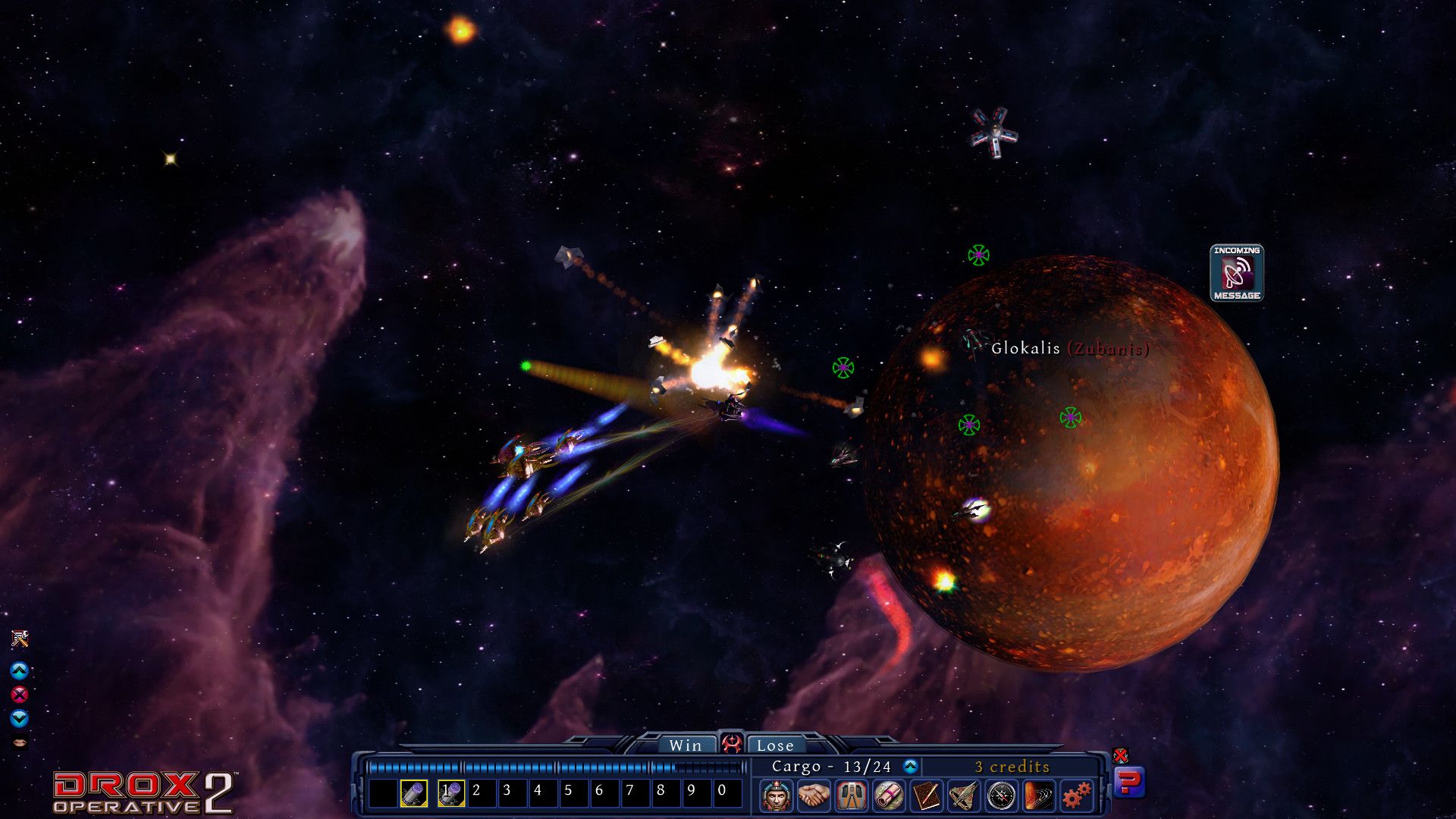
Drox Operative 2 (2020)
Ask an ARPG fan for one of their favorite games and they’ll probably throw out a name like Grim Dawn, Path of Exile, and, of course, the Diablo series. And while these games are good, none of them hold a candle in terms of depth and scale compared to the likes of Soldak Entertainment. For almost 20 years now, designer Steven Peeler has been putting out ARPGs of amazing depth, combining roguelikes, ARPGs, and procedural storytelling. While each series has different base elements that I’ll come back to in a minute, their foundation remains the same.
You’ll start most games by creating a character. Characters can belong to a class that gives them three different skill trees of abilities or perks, or you can dual-class any two skill trees that you want. From there, you’ll generate a world based on different starting conditions and the overall level of the character.
Unlike other ARPGs, ‘the world’ is not the full game, but an opportunity for procedural storytelling. Your mission is to win by completing one of several win states while growing in power and finding new gear to take to the next world. The quests in a Soldak game are no jokes. If a quest says something bad is going to happen if you fail, then something bad is going to happen. The quests are procedural based on the conditions and state of the world. If you let a bad guy get too powerful, a later quest may have you going to stop them before they conquer everyone else. Everything about the world and the quest structure is 100% dynamic.

For this series, in particular, I want to talk about Drox Operative. It stands out from the other games thanks to its sci-fi nature rather than fantasy. In this game, your ship is your character—with loot built around different modules and systems you can attach to it. If you want to be a “pew pew” laser person, or send out drones of ships, you can do that. Your only limits are your ship and your level. Each map gives you a galaxy of planets to explore and races to deal with. Your mission is to bring peace, whether that is by getting everyone to work together, or destroying all the dissenters. Being a lone ship in the galaxy, you will take on odd jobs and help or kill planets, all the while powering yourself up to take on harder challenges. As with Soldak’s previous games, succeed or fail, and you’ll move on to the next galaxy with higher levels and more gear to chase.
Soldak’s games are incredibly deep and should have their systems studied in terms of procedural storytelling and emergent behavior. However, what hurts them the most is the new player’s perspective that has haunted their games since the beginning. All of their games make use of the same or similar engine, which gives all fantasy games a very similar look to them. Onboarding can be rough because of its procedural nature. You can get a world spawn that you can clear within an hour, or you could get one where every time you clear a task, several threats pop up all at the same time. Because you are completely free to build your character, you are also completely free to mess them up. Due to all the systems and forms of progression going on, it’s very easy to run into a fight or situation where you’re crushed and do not know why.
The entirety of Soldak’s games is proof of the ingenuity that comes from the indie space, but also the challenge of breaking into a market that is built on aesthetics as much as it is the gameplay.

E.V.O. The Search for Eden (1992)
The 90s was really the golden age of JRPGs and fantastic concepts that came from Japanese developers. The PS1/PS2 era is known as one of the best for JRPG design. During the 16-bit era, the likes of Final Fantasy dominated the conversation, with smaller studios trying to do something different to the formula to stand out. Enix, the other major JRPG publisher, would publish many varieties of JRPG, many of which I enjoyed. EVO the Search for Eden was developed by Almanic Corporation and took us to an original setting for a game at the time: the evolution of the Earth. Starting as a fish at the dawn of life, it’s up to you to survive the ages in order to figure out why some cosmic force is messing with the history of the planet.
The game is played as an action platformer, with the twist that you are gaining evolution points needed to evolve your character. At each age, you’ll be able to evolve different arms, legs, body types, and so forth to create your own fighting animal. Different parts will affect your overall health and damage output, as well as movement. Some forms are better at hopping on enemies or ramming them while getting bigger teeth meant having a stronger bite. Because of the limitations at the time of development, this system wasn’t the deepest and there were clear best parts to put on, but it was a novel design.

I really like how the setting of the game dealt with the evolution of the Earth. It’s also rare outside of strategy games to see someone build a game around that scale. The game goes through ages that we all know, such as the age of the dinosaurs, early mammals, that time when humanoid bird people ruled from a floating palace using magic… Maybe that last one was just in the game. If you knew the right order, you could evolve into the ultimate animal — man — and run around fighting enemies with a club.
The idea of using evolution and the history of a species is a concept that you would think more games would attempt. However, that scale is often what hurts these games in creating meaningful gameplay. One of the most infamous examples would be Spore, which allowed players to create an alien civilization starting at the microscopic level. The issue was that the gameplay never really kept up with the scale of universal growth. There is one game that really leaned on the gameplay side and that was Ancestors: The Humankind Odyssey, which let you control the evolution of shapes that would become the early versions of mankind. Very ambitious game, but it lacked onboarding and UX design to get players interested.
EVO stands as another notch in the ‘off-brand’ RPG belt of Enix during their heyday, and is a concept I would love to see explored further today.
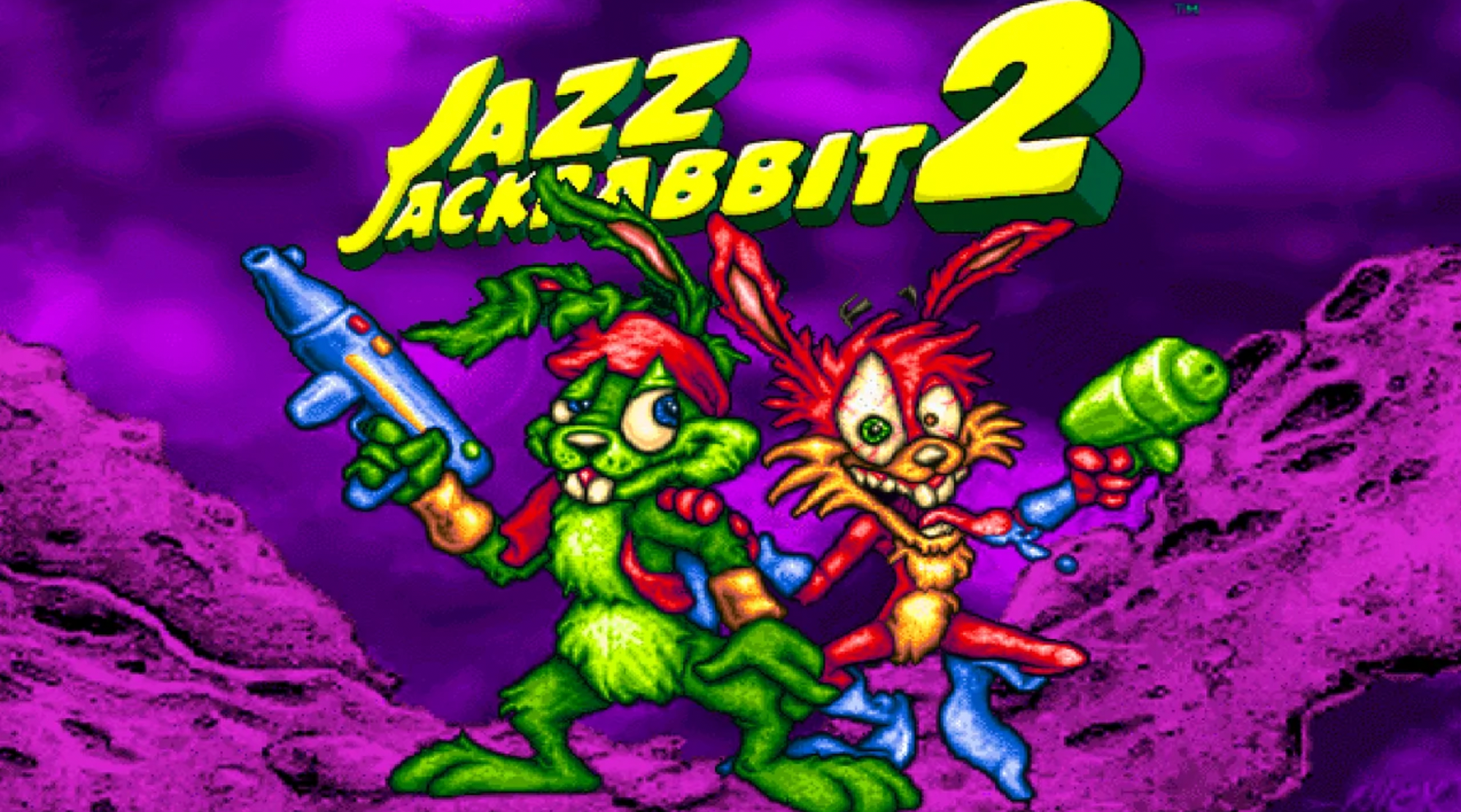
Geena Hardy
Jazz Jackrabbit 2 (1998)
My brief career as a PC gamer began with the Macintosh Performa. The computer lay out of reach on the second floor with our older siblings, so we had to ask permission to play edutainment games like Super Munchers, Tree House, and Mario Teaches Typing.
2001 marked the official gaming independence of us baby Millennials and our first non-Macintosh computer, armed with the Windows 98 operating system. Packaged in a thick black zipper case were CD-ROM games, and we didn’t recognize a single one. So we played the games with the most interesting label art, and one of those games was 1998’s Jazz Jackrabbit 2.
Armed with only the disc, and no story manual, we crowded around the computer, debating who could go next after me (the eldest of our trio). Entering the unknown, we watched a wild, animated intro that communicated the quick and dirty of an otherwise opaque plot.
The turtle terrorist, Devan Shell, wants to erase rabbits from the timeline. So, he steals Princess Earlong’s wedding diamond, and Jazz Jackrabbit gets thrown in prison for failing to get rid of the guy. With the help of his brother, Spaz, they hatch a plan to reclaim the wedding diamond before the turtle terrorists can use it to alter time.
We stumbled our way through the first level, ‘Formerly a Prince’, taking cues from our time spent playing Sonic the Hedgehog 2 with our big brother. It was smooth sailing for us until we reached the big boss of the level, Queen Earlong. Then the battle of attrition began, and our keyboard did not know peace until our little brother power slid Queen Earlong into pixilated bits just as she teetered on the edge of the boss arena.

The celebratory roar of almost-teenagers earned the usual annoyance, but from then on, it became a competition. Who could kill Queen Earlong the quickest or in the most brutal way possible? Twenty years later, our brother is still the titleholder for ‘most brutal kill’.
Published by Gathering Developers, and developed by Epic Games (formally Epic Megagames of Rockville, Maryland), Jazz Jackrabbit 2 wears its Sonic the Hedgehog influence on its sleeve, but to a lesser degree than 1994’s Jazz Jackrabbit. Adopting the Looney Tunes aesthetic for its characters, Jackrabbit 2’s art direction (handled still by artist Nick Stadler) leans into the Saturday Morning cartoon format with pop culture references ranging from Purple Rain (which flew right over our young heads), Back to the Future, and the hippie movement of the 60s.
Jackrabbit 2 takes the Hedgehog formula and builds on its personal strengths through Jazz and Spaz. The Brother’s Jackrabbit is a riff on the Sonic and Tails dynamic, encouraging replays for just slightly different mechanics, right down to their idle animations (Jazz is impatient and ready to go, Spaz is listless and comfortable eating birds just passing by). Spaz can high jump like no one’s business, and Jazz’s helicopter ears make for slightly better precision platforming. Epic Games built both characters around moving as fast as possible through the levels. It’s a far cry from Sonic’s speed, and Tail’s slow, but is a welcome rescue support.
Alongside smoother character animations for the player characters, is the labyrinthine level design, overseen by Cliff Bleszinski. From the flat beige-brown stones of the Queen Earlong’s dungeons, the kaleidoscope inversion of colors in ‘Flashback’, and the gothic design of a ‘Cold Day in Heck’, the full-screen level design encourages the player to make predictive decisions as they speed through perilous obstacles, and lumbering themed enemies.
Tying it all together is Alexander Brandon’s score for the game. Building off of the work established by Jazz Jackrabbit’s composer, Robert Allen, Brandon updates the Jazz Jackrabbit theme (just a little), and leans heavily on the synth and orchestra hits as each level progresses.
Sometimes, as with the ‘Beach Bunny!’ and ‘Hippie Heaven’ themes, Brandon will veer into the absurdly peppy and burning electric guitars, which suit each level’s design. Both became a staple of summer memories (for us) during marathon plays that taxed the computer’s operating system. ‘Jazz Castle’ and ‘Laboratory Level’ are themes that are burned into my memory and I can recall the game when I’m grasping for its name.
Jazz Jackrabbit 2 features at least two expansion packs (Holiday Hare ’98, The Secret Files), a level designer you can fool around with, and alternate game modes such as online multiplayer, story-mode co-op (which, let me tell you, isn’t easy with one keyboard), and capture the flag (among others).

I chose not to download the sharable versions of Holiday Hare ‘98 or The Secret Files, lest I risk the life of the family computer to a virus of some sort. I can’t speak to the quality of either, though I’ve heard nothing but good things.
Jazz Jackrabbit 2 and its predecessor were hard-to-find gems, out-of-print. The small Jazz Jackrabbit community archived different versions online, the community having cataloged everything you could’ve wanted to know about the game. From the origins of the game as an idea developed by Arjan Brussee (co-founder of Guerilla Games and Boss Key Productions), to Bleszinski and Stadler’s eventual involvement in the Jazz Jackrabbit design.
You name it, de facto fansite Jazz Jackrabbit Online probably had information on it. More recently, Jazz Jackrabbit experienced an in-print resurgence through the DRM-free gaming store, GOG.com (formerly Good old Games), and an official soundtrack release for the scores composed by Brandon and Allen in Jazz Jackrabbit 1 & 2.
If you’re interested in 2D side-scrolling games in the vein of Sonic, you can’t go wrong with Jazz Jackrabbit 2.
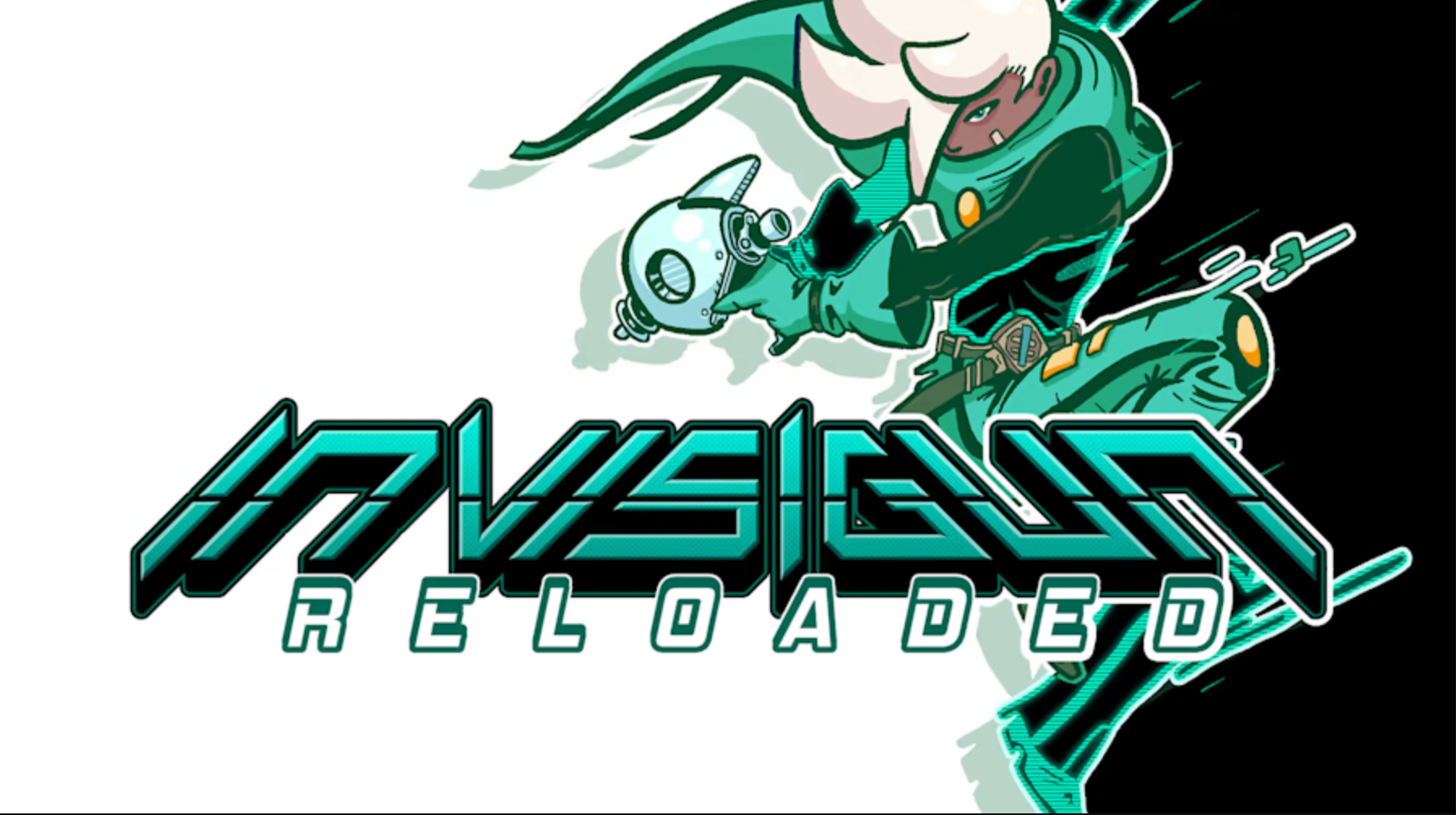
James Johnen
Invisigun Heroes/Reloaded (2017)
Let’s get this out of the way: I don’t like multiplayer games. I’ll never have the time or patience to get good at battle royale shooters. Herding several adults to play a team-based game sounds impossible, and frankly, torturous at my age. I’ve even bounced off countless MMOs, despite my lifelong dream of being a seven-foot-tall bunny woman. So, when I experienced love at first sight within seconds of gameplay for Sombr Studio’s 2017 competitive action 2-D shooter Invisigun Heroes, the surprise hit like a bullet from the dark.
Like many indies of the era, Invisigun Heroes spawned from a 2016 Kickstarter campaign, gaining just over $36,000 on a compelling pre-alpha gameplay video and a unique premise: “Everyone’s Invisible - including yourself!”. Invisigun is a grid-based, single-screen arena shooter where stealth and strategy outweigh quick reactions and aggression. Think Bomberman meets Overwatch, except no one is visible unless they attack, hit a wall, or fall victim to a trap.
So much about this game appealed to me. Right from the main menu, you understand the slick and flashy retro aesthetic. The character select screen displays nine unique characters (with three additional secret characters available) whose pixel art portraits give you a sense of their personality and play style before you even press ‘Ready’.

The real magic begins in the arena. “Easy to pick up, difficult to master” has never fit a better mold. Single-screen arena maps are pleasing to the eye, no matter which of the 72 (six planetary biomes containing 12 unique maps) locations you choose. It only takes experiencing a few of these to realize just how clever the game design is. Every detail on the screen is tailored to the game’s premise, and a new player will probably go from trigger-happy to observant assassin after realizing that flock of birds is more than just a pretty asset but placed by a careful hand to reveal your location to all your rivals. It doesn’t stop there. Water ripples, snow tracks, and even opening an item crate result in a terrifying half-second of vulnerability. Stack this with the fact that one blazing bullet is enough to kill you in most modes, and you’ve got a recipe for one of the most frantic and tense deathmatch experiences on the market.
Now the bad news. At the time of writing, Invisigun Heroes has no Wikipedia entry, a Metacritic score of TBD, and Google results that assume you misspelled the name of a popular orthodontic alternative. While not exactly a flop, it never cracked the upper echelon of indie royalty that it rightly deserves. With the interesting premise, cunning design, perfect streaming vibes, and ‘hero-shooter’ elements at a time when this was the buzzword du jour, the game brought together everything it needed to break into the gaming zeitgeist of 2017. So why didn’t it?
Every glowing review, podcast mention, and superfan of this game inevitably brings up one fatal flaw. There is no player base. Sure, you can play with bots. Or dabble in the single-player mode, which essentially equates to a more complex version of Smash Bros.’ ‘Break the Targets’ mini-game. But the real allure of this game is in the player interaction. Few games bridge the couch to online multiplayer experience without sacrificing some unnameable sense of excitement, but Invisigun comes close. Which makes it even more of a shame that finding players is such a chore. To this day, the best way to find a match is through a developer-run Discord, which is a nice thought on Sombr’s part, but not exactly the sign of a robust community. If you don’t have a group of friends to schedule matches with, you’ll find yourself locked out of private lobbies and stuck with the trolling dregs of the player base.

There are many causes for the player count problem, but the developer set the first part of the chain reaction in place himself. While making a game available to Kickstarter backers before its Steam release seems reasonable in theory, in practice it only split the player base. Instead of creating one large pool combining passionate backers with curious storefront customers, there were several weeks for the backers to either lose interest or master the game meta and have an insurmountable advantage over someone entering a lobby for the first time.
By the time Invisigun caught the attention of streamers, public broadcasts showing the difficulty of finding a match in real time almost outweighed the positives of the exposure. For the next few years, it festered in the background with an average daily peak concurrent player count in double digits.
A second chance surfaced in August 2019. A suite of new content would be added, including new maps, new characters, and a glossy coat of polish covering every crack. It would also port to PS4 and Switch. This rebrand was called Invisigun Reloaded. It was a smart move. Even the developer, Shadi Muklashy, admitted “The natural home for this game (couch/online/multiplayer) has always been on consoles.” If it ever had a chance at greatness, it would be on the Nintendo Switch.
I sometimes daydream about what it would have been like if Invisigun Heroes had launched alongside the Switch in 2017. It would have thrived alongside its indie peers and given us a stellar multiplayer option for those looking for more depth than 1-2 Switch or Snipperclips. However, in 2019, it could not pierce the onslaught of releases that were turning the Nintendo eShop into the next Steam storefront. Invisgun Reloaded’s relaunch was an overall net gain, but its chance to rise to that next level of relevance may be forever behind us. The ultimate irony is that a game centering on invisibility’s biggest hurdle is not being seen.
Invisigun’s journey reinforces that luck is just as important as getting everything right. Somewhere in the multiverse, there is a world where it’s held up alongside Stardew Valley and Undertale as proof of what one person can create with the right cocktail of passion and drive. At least in this one, it still delights a small, dedicated audience, and will forever be the game that I force on new people on game nights.
Karl Otty
Whiplash (2003)
I’m not exaggerating when I say that I’ve never once heard another person talk about the game Whiplash. This might not be entirely unusual if it was, say, an indie title on itch.io, and not a AAA PS2 release released by an established developer and a major publisher. Sandwiched between the (sadly) last Legacy of Kain title and their first Tomb Raider release, Whiplash is a 2003 release from none other than Crystal Dynamics. Before being strapped to the driver’s seat of the Tomb Raider gravy train by Eidos, Crystal Dynamics wasn’t afraid to experiment with strange, one-off games in between their more recognisable outputs like Gex, Legacy of Kain, and Pandemonium. Whiplash is just one of these, and there is plenty more just like it which I’ve never even heard of before writing this — it’s just another Crystal Dynamics experiment assigned a fateful orange Metacritic score and left out of the history books.
Don't believe the critics! Whiplash is great fun!
Releasing almost exactly a year after Ratchet and Clank, it’s safe to say that Whiplash’s influence was clear to see. Set in the sprawling research facility of a scientific megacorporation, our heroes are Spanx and Redmond (names that clearly weren’t marketable enough to make it into the game’s title). A weasel and a rabbit respectively, Spanx and Redmond have spent their lives as the subjects of animal testing experiments for Genron, the aforementioned megacorp. Chained together and dumped onto a conveyor belt heading towards a machine designed to fuse animals together, the game begins seconds before Spanx and Redmond become some kind or reasit, or wabbel, or something. Breaking out of the enclosed conveyor, the team continues on to wreak havoc across the facility, destroying as much equipment as they can and freeing animals from all kinds of bizarre and humiliating experiments.

This might all sound depressing, and it would be if not for the game’s snarky sense of humour. Like Ratchet and Clank before it, Whiplash isn’t afraid of ridicule and satirizes the unchecked consumerism which led to Genron’s animal testing. Sarcastic, ironic, and sometimes a little off-colour, Whiplash kits itself out with every stereotype for office workers, kitchen staff, security, lab rats, etc. And then there’s the protagonist themselves, a commentary on animal testing so strong that it drew attention from the press because journalists thought the game was advocating animal testing.
The player controls Spanx, the weasel, and the dizzying amount of electro-shock therapy has thoroughly popped his brain. Operating mostly on instinct, he’s impulsive, unpredictable, and probably not very good at crosswords. Think Crash Bandicoot or the Tazmanian Devil. Redmond, on the other hand, is our lovable deadpan, snarky sidekick. Thanks to years of makeup testing, his fur has hardened into an impenetrable shell making him essentially invincible (it makes sense, trust me, don’t think too hard about it). Handy for Spanx, this makes Redmond an excellent flail while they’re still chained together at the wrist. So Redmond is our sidekick, but also our weapon. Redmond isn’t too happy about this and will make quips about it constantly. Maybe too much. One of the game’s bigger issues is just how much Redmond talks as you’re playing the game. Quickly, the lines repeat and grow tiresome over the course of the game.
Speaking of repetitiveness, let’s talk about combat. It’s not the game’s strongest point. Early on, it’s as simple as waiting for the enemy to stop blocking, interrupting their attack windup, and then stunlocking them. Unlockable abilities make it more interesting, such as leg sweeps to stunlock an enemy differently. It’s something at least? Other aspects of the gameplay are far more well-thought-out, with some forward-thinking ideas for the time. They handled character progression through an RPG-lite mechanic in which both Spanx and Redmond can level up and choose perks for themselves as they do (even allowing you to configure the ratio in which they share the XP between them). That idea might seem obvious now when practically every game has an RPG progression system, but this was practically unheard of in 2003.

The platforming also finds fun ways to keep itself interesting through outlets spread out across the facility, essentially functioning as power-ups. Spanx will shove Redmond inside, to either boost combat abilities (the fire outlet which makes our bunny into a nice flame weapon) or allows for new abilities (the helium outlet which turns Redmond into a balloon and allows you to float upwards). Each new area will usually introduce a new outlet, and it works nicely to keep the platforming unique throughout the adventure.
More than anything else, I think it’s Whiplash’s unusual sense of humour that keeps me engaged. Coming back to it after a long time for this review, I expected to find it a bit cringe, maybe even lazy, and some of the surface-level jokes certainly fall flat. Yet there’s something a bit more intelligent going on in the humour, something I couldn’t have noticed as an 8-year-old playing it for the first time. The satire of corporate fat cats, the sarcastic quips from Redmond, and even the disembodied voice of the mysterious benefactor who guides you through the entire game, who I can now see is clearly a parody of the Elder God from Crystal Dynamics’ own Soul Reaver title. I will not argue that Whiplash is the greatest game ever made — it’s hardly a Shadow of the Colossus level of a hidden gem — but it’s got more going on than critics at the time gave it credit for. It would be a waste to let a game like this go forgotten, as it seems to have been so far. Whiplash deserves better than that. It’s a game with heart.
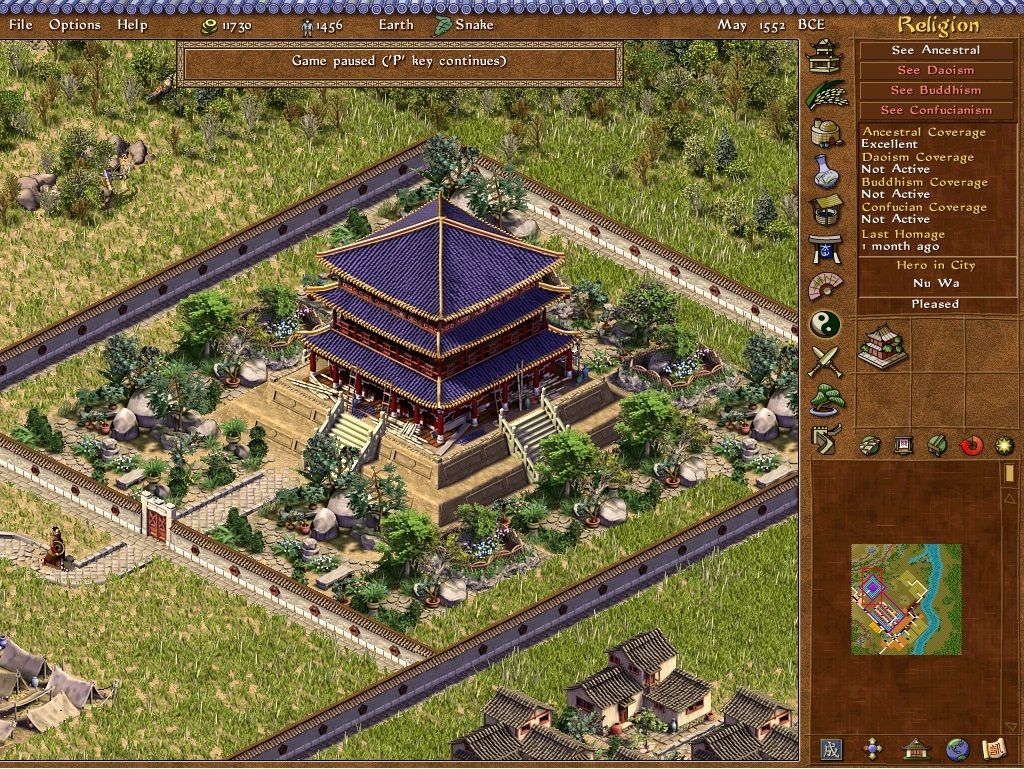
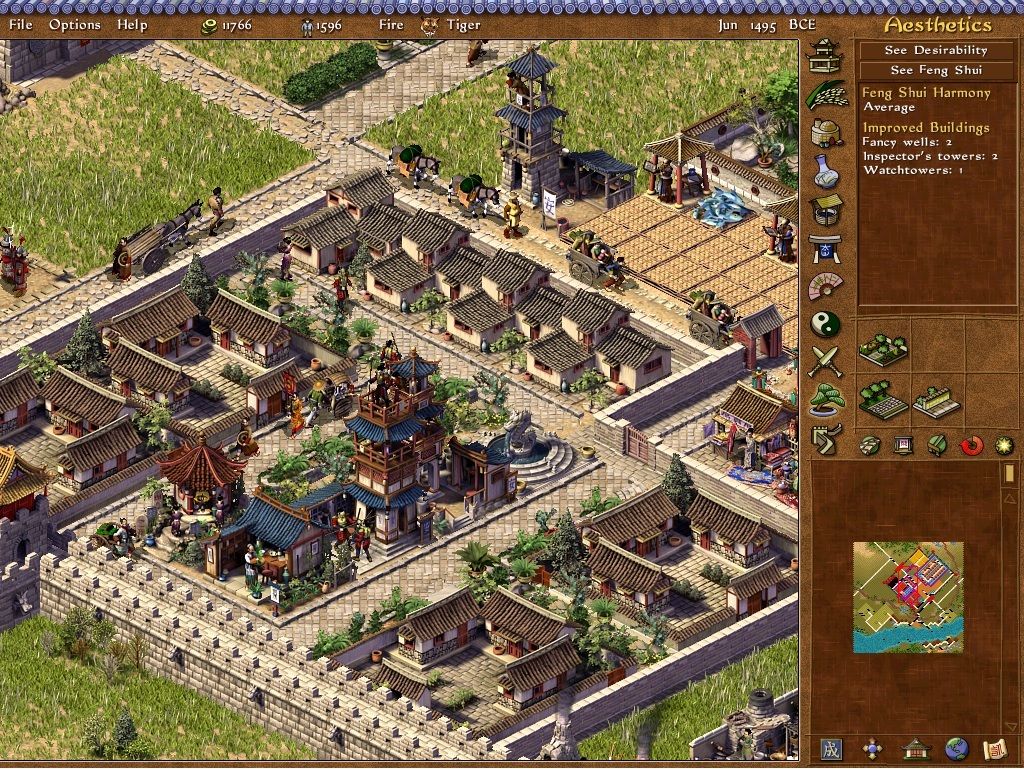
Source: GOG.com.
Antony Terence
Emperor: Rise of the Middle Kingdom (2002)
The historical strategy specialists over at Impressions Games, responsible for beloved hits like Pharoah and Caesar, shifted their gaze to China in 2002, whose dynasties literally worshipped engineers as folk heroes. Handling your dynasty’s ever-increasing demands (of your city and those around yours) and micromanagement missteps are all accounted for in Emperor: Rise of the Middle Kingdom. Emperor: Rise of the Middle Kingdom applies a healing balm on some of the series’ earlier quirks and scalding-hot water on others.
First, there’s Feng Shui, a hidden stat that influences popularity and health based on building arrangement (RIP optimized building circles). And while Pharoah’s water carriers walked away from fires all Hollywood-like, Emperor lets you place gates to fix their routes. Honoring ancient heroes (which you can control) takes the place of religion and trade plays a bigger role across the game’s campaign.
This time, upgrading your shabby shanties primarily require varieties of food (104 recipes, in fact).

Attractive walls let you keep your residential sector right next to your industries without stepping on the former’s tolerance. And while buildings can catch fire or a cold and crumble like those from previous titles, a decent tutorial means you’ll learn about these mechanics before the damage is done. Unfortunately, mediocre combat isn’t on the substitute bench like Pharoah with invasions being commonplace.
Minor complaints aside, Emperor: Rise of the Middle Kingdom is a worthy flag-bearer of Impressions Games’ legacy, right down to its Nintendo-esque difficulty and pixelated charm. Newcomers will appreciate the series’ formula at work and it will send longtime fans back to the micromanagement hell they fell in love with two decades ago.
Source: YouTube.
Lucas Di Quinzio
Roundabout (2014)
I’m sure that a lot of you are familiar with the term ludonarrative dissonance: the contradiction between the tone of a game’s narrative and the tone of its gameplay. The clearest example of this for me is Uncharted, an Indiana Jones-esque adventure series starring Nathan Drake, an affable rogue who murders a dozen nameless goons in each of his many combat encounters. Critics usually posit it as a bad thing, but it doesn’t have to be, as in the delightfully absurd 2014 driving/puzzle game Roundabout from No Goblin.
You play as Georgio Manos, the world’s first revolving limo driver. In a colourful, 70s-inspired world, you will pick up passengers, fall in love, and fight a nasty competing revolving limo driver. All of this takes place while navigating obstacles in your constantly spinning limo that will explode after a few mistakes and squishes any pedestrians in its way. To add another goofy layer, the story is told through purposely dodgy FMVs set in the limousine. Georgio, played by a red-haired woman, doesn’t talk and communicates mostly by looking over his shoulder. Cut scenes with Georgio and the passenger play before and after missions.

Driving passengers to their destination is a bit of Crazy Taxi, but a lot more of the GBA puzzle game Kuru Kuru Kuririn, which stars a constantly spinning blue pole. There’s no time pressure and frequent checkpoints, but plenty of challenge. Be aware that you will frequently explode as the passenger is chatting away. After a while, you will gain the ability to jump and the game becomes part platformer. It’s all part of the ever-increasing absurdity that permeates Roundabout, just layers and layers of silliness.
A vaguely psychedelic drug that summons a talking skeleton? Sure. Mowing a lawn with your spinning, jumping limousine? There’s nothing Georgio and his car can’t do, so why not? Totaling someone’s car is a far worse crime than mass vehicular homicide? Let’s roll with it! Roundabout is unabashed in its silliness and that’s what makes it worthwhile.



